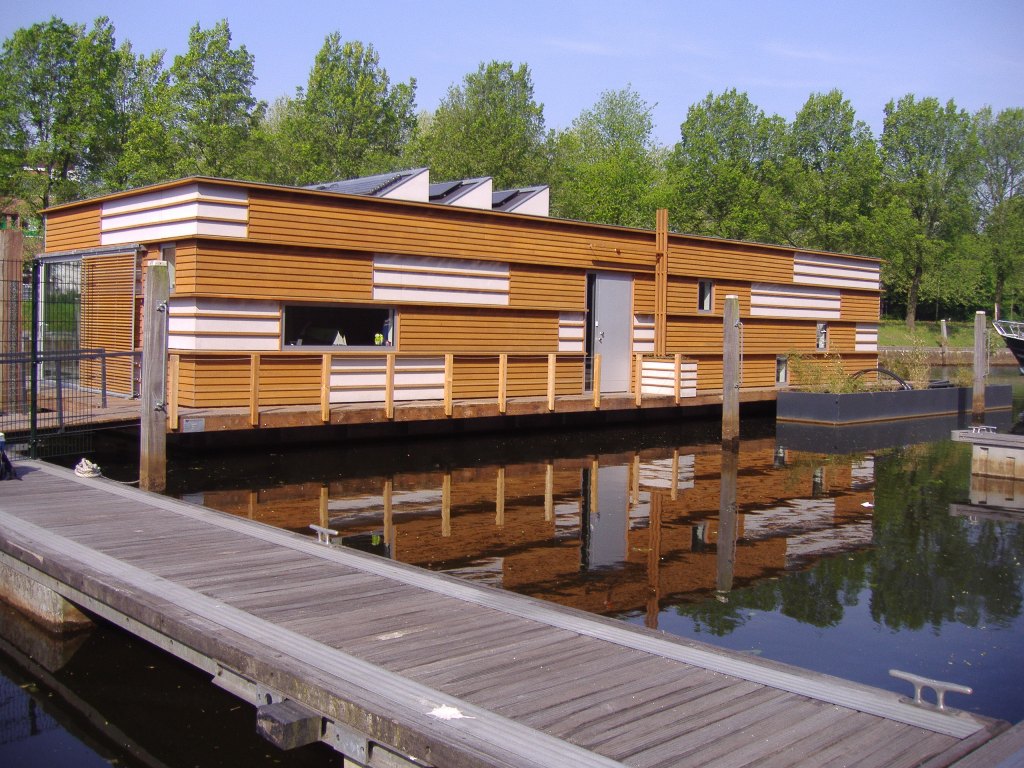The boat with no carbon footprint
Amsterdam, the capital and largest city of The Netherlands, was founded in the late 12th century as a small fishing village on the banks of the Amstel River.
The city’s famous canal system was designed in the 17th century to improve the transport network. However, living on the water became popular after World War II when there was a severe housing shortage and a surplus of old cargo vessels.
The inner waterways are now inhabited by about 2,400 families living on houseboats, about 750 of which are moored in downtown Amsterdam.
Currently moored in the city’s harbor, the geWoonboot is an entirely self-sufficient prototype houseboat that treats its own wastewater and supplies its own drinking water.
For all intents and purposes its exterior is no different from any other houseboat in the marina, but several differences lie within. In order to make the houseboat self-sufficient, a large number of eco-friendly solutions were adopted during construction.
For example, the water used for flushing the toilet comes not from the potable supply but from rainwater collected onboard. Wastewater is channeled to an onboard septic tank for initial treatment then transferred by sump pump to floating reed beds alongside the houseboat.
To get the best results, wastewater from the toilet (blackwater) passes through the septic tank, and graywater – from the shower, kitchen sink, washing machine and dishwasher – passes through a degreaser.
“Our basic premise is that when rain falls on the roof it will be collected by our tanks,” says Victor Michielse, consultant at the housing association deltaWonen.
“It could just as well be thrown overboard, but in this case it would be better to add water to the system and to flush the toilet. If the tank is empty for any reason, water can be drawn from the effluent tank attached to the reed beds.
“The system uses a three-chamber tank. The first chamber holds half the total volume, and the others each hold one-quarter.
“Like all septic tanks, the geWoonboot tank is designed to separate solids from liquids, but it needs to be emptied occasionally because the solids slowly build up over seven years or so.”
Most of the plumbing network is made up of PVC pressure pipes, and the rainwater tanks are of polyethylene – a more environmentally friendly option, Michielse says.
“The diameter of the tubing connected to the pumps is relatively large, resulting in minor pressure loss while minimizing the energy needed for pumping the water through the boat. In order to be eco-friendly the amount of energy had to be minimal.
“If energy is from solar or wind systems it’s no big deal, but for this project we used rather large piping and rather small pumps to ensure true autonomy.”
Designer and contractor Frank van Dien of the constructed wetlands manufacturer ECOFYT says the reed bed filtration process pumps effluent from the boat after some retention time in the septic tank and degreaser.
It flows by means of free decline through the reed beds (or helofytenfilter, in Dutch).
“The helofytenfilter uses natural processes including biological activity, chemical reactions, mechanical filtration and absorption to clean wastewater,” van Dien says.
“The overall result may see an improvement in water quality up to 95%.
“Wastewater is divided just below the surface of the garden with the assistance of a pump, and is done in pulses to enhance oxygen transfer in the system. Only 3m2 (32 square feet) is needed to purify the water for one person.”
There are an estimated 50,000 constructed wetlands around the world.
At the bottom of the beds, the treated water is collected by means of a drainage system then pumped back to a storage tank in the houseboat to supply the toilet cistern, washing machine and reverse osmosis system which, with UV treatment, produces drinking water.
The reverse osmosis system, with additional carbon and fiber filters, delivers two kinds of water: potable, and a waste stream containing dirt filtered out of the source water.
The waste stream is added back to the separation tanks and runs through the entire purification process once more.
If rain leads to too much water in the system, either that supply or the water that has passed through the constructed wetlands is automatically discharged overboard.
Unprocessed waste water is never discharged by the geWoonboot.
Michielse says water-saving techniques were not required, as total reuse was the aim in this project.
Other facets of the geWoonboot include a heating system that relies on energy present in the water on which the vessel floats. No matter how cold the external water is, water in the underfloor heating system can be as high as 48ºC (120ºF).
This houseboat also produces its own electricity using solar panels, which provide the energy needed to power the lights and run the water pump. Excess power is stored in an collection of large batteries.
The boat also features heat-reflecting glass in the windows.
“The design process for this project was fairly brief – it was completed within a year,” Michielse says.
“Commercialization was not the purpose behind the geWoonboot. The prototype craft was created as a special project to mark our company’s 100th anniversary.”
Although deltaWonen is not a producer, Michielse says the publicity and feedback from people interested in acquiring a geWoonboot shows there is potential for commercialization.

